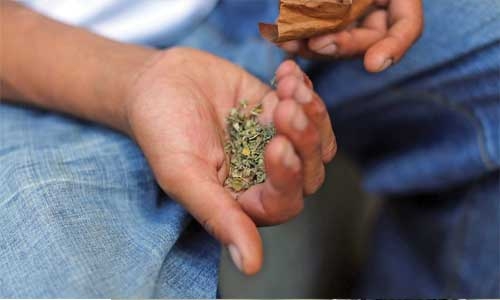In search of lifeline
Manama : In our attempts to wipe out the illicit drugs menace, ‘demand and supply’ plays a major role. Drug trafficking is an industry working generally on a vicious cycle of manufactured demand and then supply. As the world observes the International Day against Drug Abuse and Illicit Trafficking today, we have to concentrate on this issue, top UN official said.
In his message on this day, UN Secretary-General Ban Ki-moon said: “Unless we reduce demand for illicit drugs, we can never fully tackle cultivation, production or trafficking. Governments have a responsibility to counteract both drug trafficking and drug abuse, but communities can also make a major contribution.”
“Families, schools, civil society and religious organisations can do their part to rid their communities of drugs. Businesses can help provide legitimate livelihoods. The media can raise awareness about the dangers of narcotics,” he added.
By resolution 42/112 of 7 December 1987, the UN General Assembly decided to observe June 26 as the International Day against Drug Abuse and Illicit Trafficking. The theme for this year is “Listen First.”
The UN General Assembly held a Special Session (UNGASS) on drugs in April 2016. This Special Session marked an important milestone in achieving the goals set in the policy document of 2009, which defined action to be taken by Member States as well as goals to be achieved by 2019.
Around five per cent of the adult population, or nearly 250 million people between the ages of 15 and 64, used at least one drug in 2014, according to the latest World Drug Report released by the United Nations Office on Drugs and Crime (UNODC) on 23 June 2016.
Activities in Bahrain
“Addict Friends,” a drug awareness society in Bahrain, conducts awareness programmes in schools and colleges on various hazards of drug abuse. It has nine board members and close to 51 members.
Mirza Ahmed Ali and Abbas Jaffar started the group five years ago. According to Ali, their society is not a group for rehabilitation but focuses on the issues people face after they come out of the treatment. “Our society tries to make these people mingle with the society after coming out of treatment.”
Mirza, the Director of the Society, is a retired Nursing Superintendent from The Drug Addiction Unit, Psychiatric division, Samaniya Hospital.
“We conduct workshops, seminar and get-togethers for people who have already recovered from the drug abuse,” said Jaffar, adding that drug abuse is rising as a major threat in the world and the effect is coming close to our homes.
“Initially people start with tobacco then to alcohol and slowly into drugs. Teenagers are very curious to imitate such things,” he added.
What Is Drug Addiction?
Addiction is a chronic, often relapsing brain disease that causes compulsive drug seeking and use, despite harmful consequences to the addicted individual and to those around him or her. Although the initial decision to take drugs is voluntary for most people, the brain changes that occur over time challenge an addicted person’s self-control and hamper his or her ability to resist intense impulses to take drugs.
Physical warning signs of drug abuse
•Bloodshot eyes, pupils larger or smaller than usual
•Changes in appetite or sleep patterns
•Sudden weight loss or weight gain
•Deterioration of physical appearance, personal grooming habits
•Unusual smells on breath, body, or clothing
•Tremors, slurred speech, or impaired coordination
Behavioural signs of drug abuse
•Drop in attendance and performance at work or school
•Unexplained need for money or financial problems; may borrow or steal to get it
•Engaging in secretive or suspicious behaviours
•Sudden change in friends, favourite hangouts, and hobbies
•Frequently getting into trouble (fights, accidents, illegal activities)
Psychological warning signs of drug abuse
•Unexplained change in personality or attitude
•Sudden mood swings, irritability, or angry outbursts
•Periods of unusual hyperactivity, agitation, or giddiness
•Lack of motivation; appears lethargic or “spaced out”
•Appears anxious or paranoid, with no reason
Related Posts


